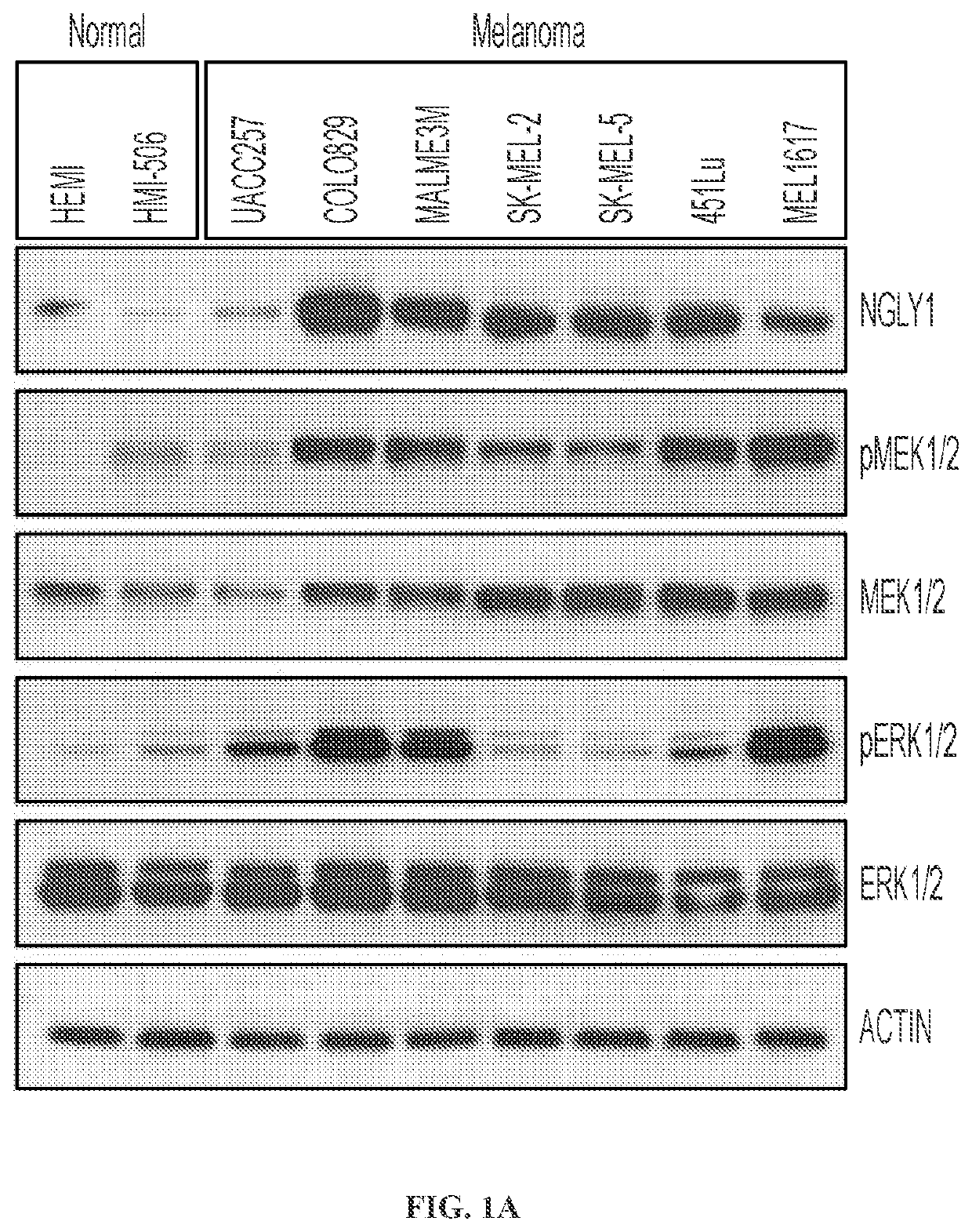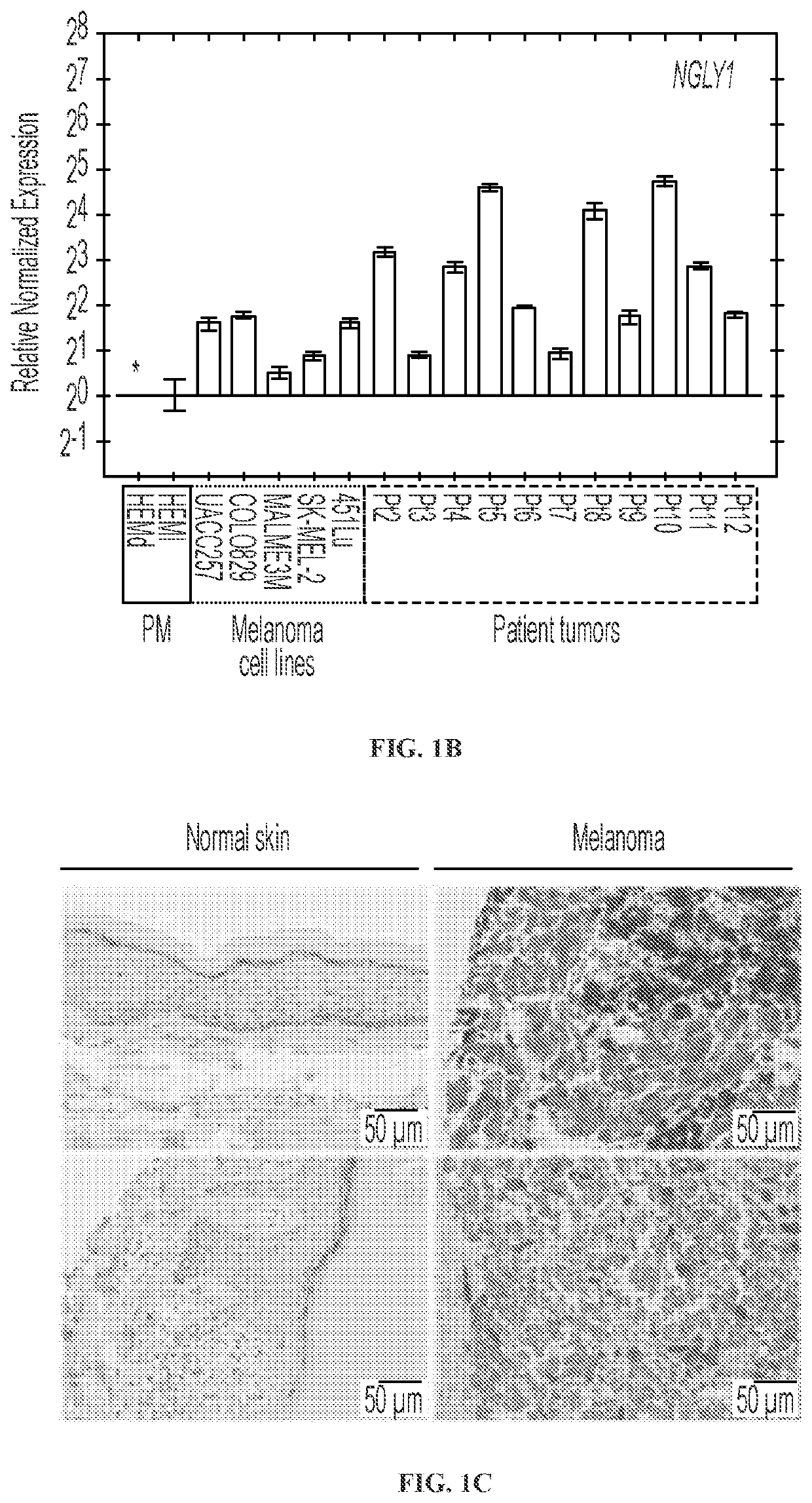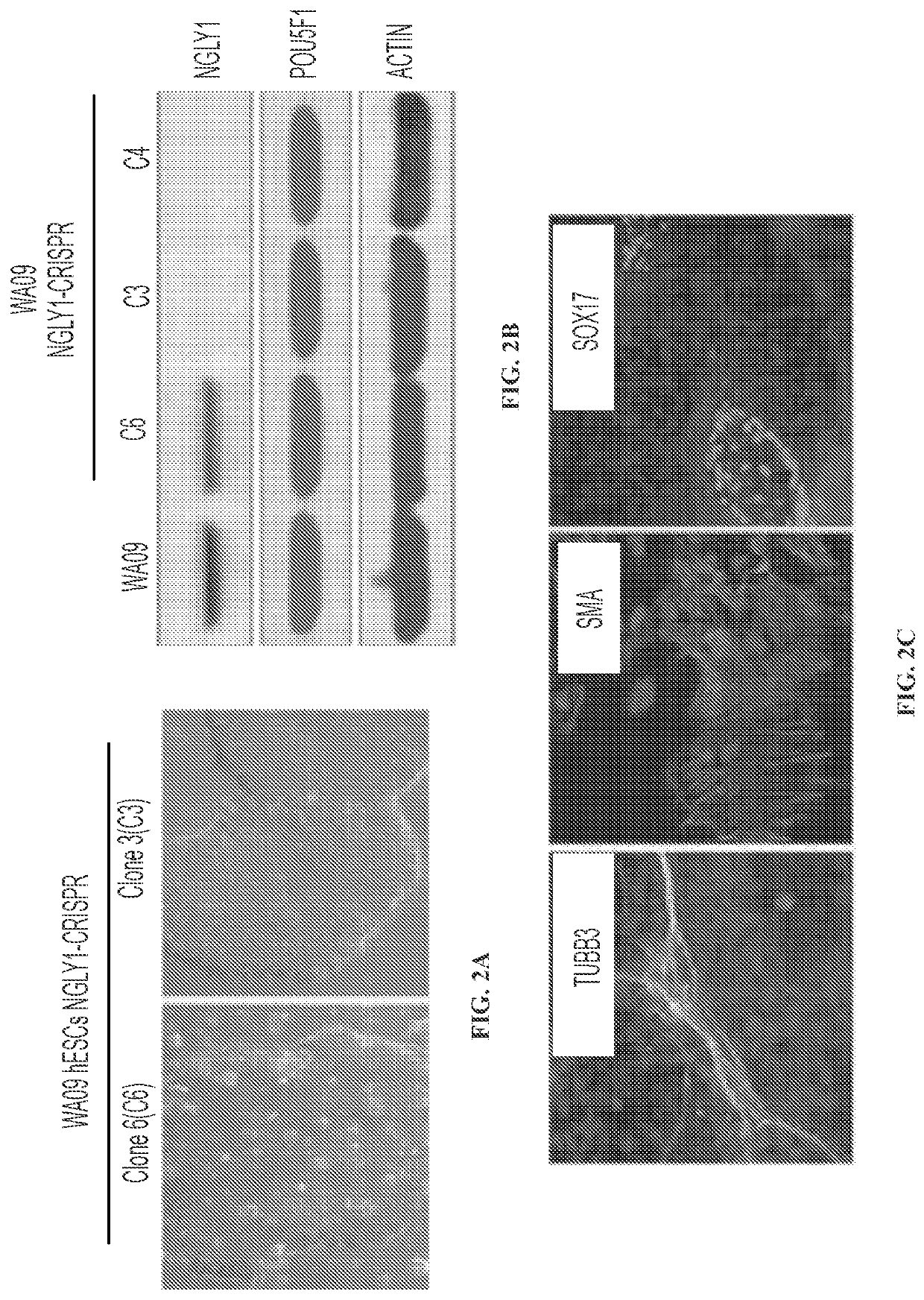Inhibition of ngly1 for the treatment of cancer
a technology of ngly1 and cancer, applied in the field of cancer, can solve the problems of not always maintaining long-term disease remission, eliciting severe side effects from traditional therapeutic approaches, and unable to achieve long-term disease remission
- Summary
- Abstract
- Description
- Claims
- Application Information
AI Technical Summary
Benefits of technology
Problems solved by technology
Method used
Image
Examples
example 1
ression in Human Normal and Cancer Cells
[0212]The expression of the NGLY1 gene in human normal and melanoma cells was analyzed. Compared with human normal cells (e.g., human normal melanocytes) in culture, a vast majority of the melanoma cell lines show the clear upregulation of NGLY1 (FIGS. 1A and 1B). The upregulation of NGLY1 is also observed in tumor samples of melanoma patients (FIGS. 1B and 1C; Table 1). These findings are consistent with the data from the Human Protein Atlas (www.proteinatlas.org / ENSG00000151092-NGLY1 / tissue; www.proteinatlas.org / ENSG00000151092-NGLY1 / cancer), supporting the potential importance of NGLY1 in melanoma cells. As a type of human pluripotent stem cells (hPSCs), undifferentiated human embryonic stem cells (hESCs) are capable of differentiation into virtually all types of somatic cells relevant to three embryonic germ layers (ectoderm, mesoderm and endoderm) and share certain characteristics (e.g., high proliferation with a fast progressing cell cyc...
example 2
Knockdown of NGLY1 in Human Cancer Cells
[0214]To enable the inducible inhibition of NGLY1, two independent shRNA sequences (shRNA645 and shRNA647) have been identified that can lead to more than 85% of NGLY1 knockdown efficiency at the RNA level in 293T cells. These NGLY1-targeting shRNA sequences and a scrambled (non-targeting) shRNA sequence were cloned into doxycycline (dox)-inducible, polycistronic green fluorescence protein (GFP)-shRNA expression constructs (a pZIP inducible lentiviral vector, TransOMIC). Stable clones have been generated with the shRNA expression constructs in multiple human melanoma cell lines, including MALME3M, UACC257, SK-MEL-2, and COL0829 melanoma cells. The stable clones of melanoma cells showed clear GFP expression upon dox treatment (FIG. 5A; FIG. 5B), indicating the expression of shRNA sequences. Compared with the cells expressing the NT-shRNA, the expression of NGLY1 was largely suppressed by NGLY1-shRNA645 and NGLY1-shRNA647 and hardly detectable i...
example 3
ion of Protein Homeostasis and Deglycosylation in Cancer Cells with Ngly1 Knockdown
[0215]By detecting ubiquitinated proteins, it was tested whether the proteasome-mediated protein degradation is disrupted by NGLY1 knockdown in melanoma cells. As shown in FIG. 6, NGLY1 knockdown hindered proteasome-mediated protein degradation, indicated by the accumulation of ubiquitinated proteins in UACC257 cells. The NGLY1 knockdown-induced upregulation of ATF4 and GADD153 was detected in MALME3M, UACC257 and SK-MEL-2 melanoma cells (FIG. 5C). In addition. This finding is consistent with the previously observed suppression of ERAD in cells with NGLY1 malfunction (Enns, et al., 2014; Huang, et al., 2015; Koizumi, et al., 2016; Lehrbach and Ruvkun, 2016; Owings, et al., 2018; Suzuki, 2015; Tomlin, et al., 2017). Since GADD153 is an important mediator for ER stress-associated apoptosis (Wang, et al., 2008), our findings suggest that ER stress signaling-mediated apoptosis may contribute to the death ...
PUM
 Login to View More
Login to View More Abstract
Description
Claims
Application Information
 Login to View More
Login to View More - R&D Engineer
- R&D Manager
- IP Professional
- Industry Leading Data Capabilities
- Powerful AI technology
- Patent DNA Extraction
Browse by: Latest US Patents, China's latest patents, Technical Efficacy Thesaurus, Application Domain, Technology Topic, Popular Technical Reports.
© 2024 PatSnap. All rights reserved.Legal|Privacy policy|Modern Slavery Act Transparency Statement|Sitemap|About US| Contact US: help@patsnap.com










